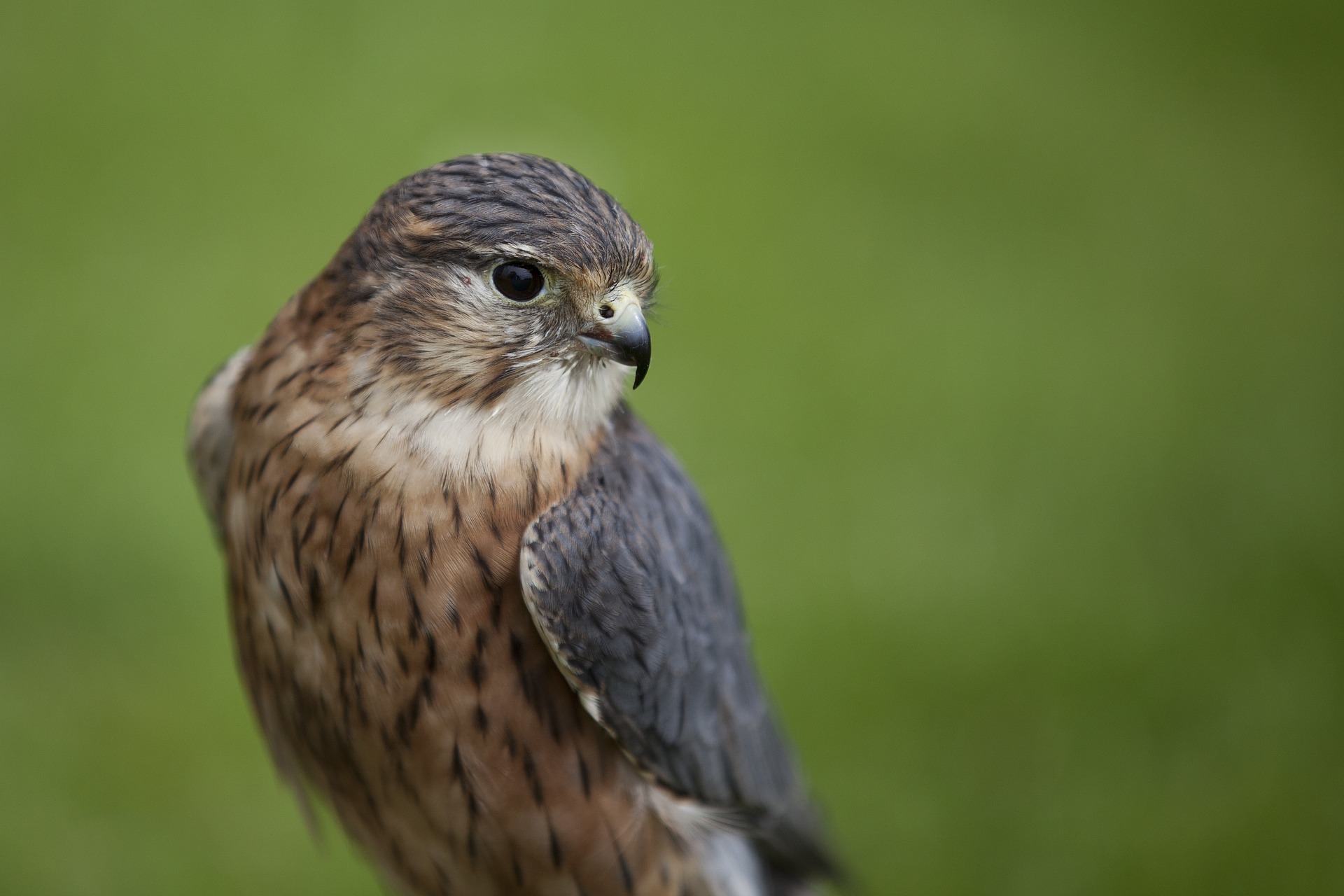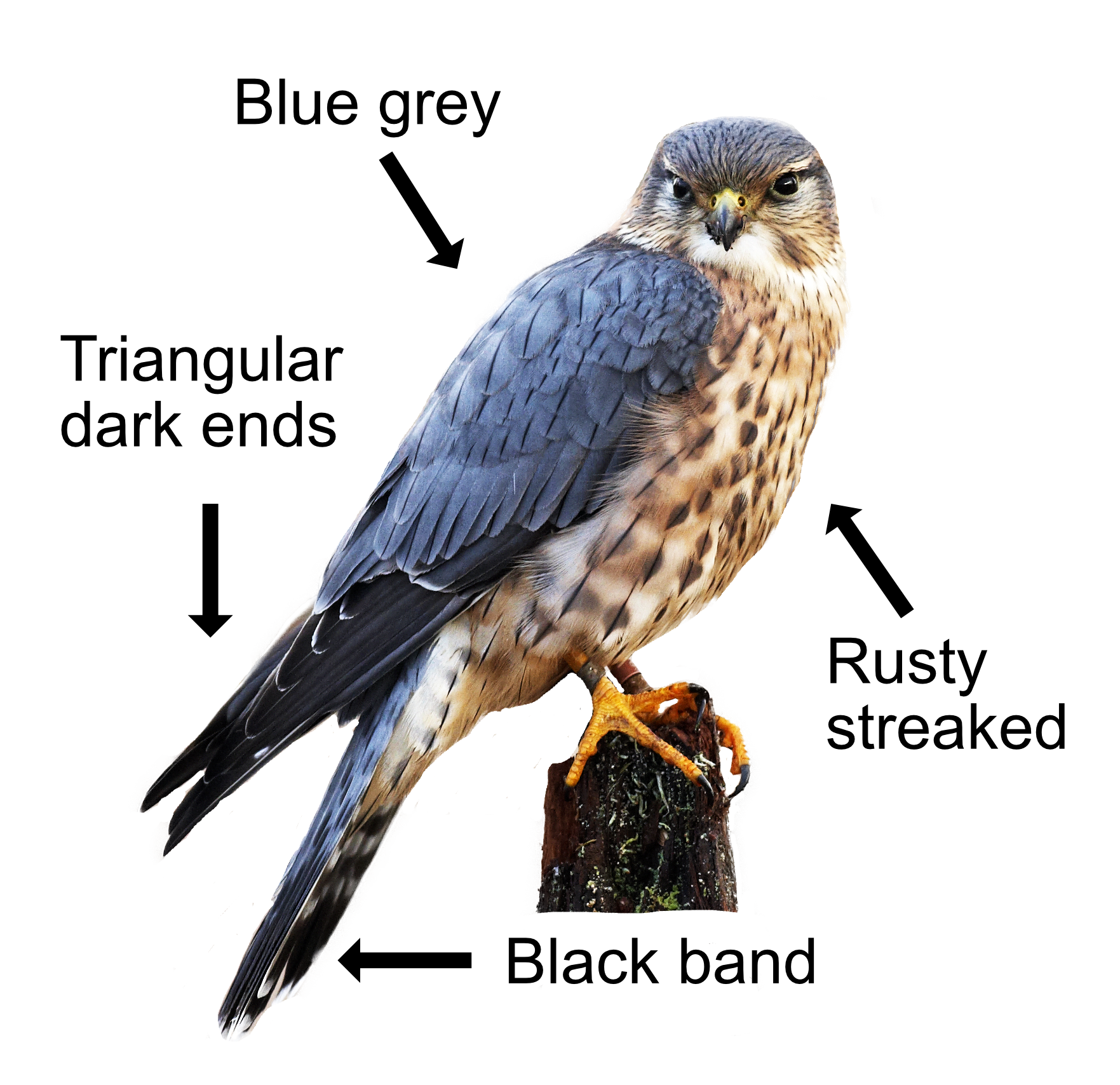
Another magic bird of prey with a wizard’s name. It is Europe's smallest falcon of the open countryside. The Merlin has for centuries been a favourite falconry bird with its ability to catch small birds. Being small, in medieval times, they considered it a lady's falcon.
The Merlin has a typical falcon shape with triangular pointed wings. It is smaller than a Kestrel and not much bigger than a potbellied Mistle Thrush. It is easy to tell apart from a Kestrel as it doesn't hover. Merlins have a blue-grey back and a rusty streaked breast. Their pointed wings are dark at the ends and there is a striking black band at the end of the tail. The female is larger and has a browner back. Merlins fly close to the ground in a direct dashing flight with short powerful wing beats followed by a glide.

Merlins usually hunt alone, chasing small birds with agile twists and turns and catching them in the air. It is a fantastic, fast and magical chase to watch. Typical prey includes Skylarks, Meadow Pipits, Chaffinches and Thrushes. They will also feed on voles, bats, moths, and beetles. Merlins rely on their speed and agility, flying fast and low, typically less than one metre above the ground, using trees and large shrubs as cover before taking their prey by surprise.
Merlin breeding occurs typically in May or June. They nest on the ground amongst moorland heather or in old crow nests. Both Mum and dad incubate the 3-5 eggs which hatch after 28 days. Initially, mum tends the young while dad gets the food, issuing a "kek, kek, kek" call near the nest. After 18 days, the young Merlins leave the nest and hide somewhere nearby. They can fly at 25 days and depend on mum and dad for a further 4 weeks. Crows are the primary threat to the eggs and nestlings, though in general carnivorous birds avoid Merlins because of their aggressiveness and agility. Their desire to drive larger raptors away from their territory is so pronounced that it is an identifying characteristic.
There are 1300 pairs in Britain. In winter, they move south from their moorland breeding grounds to lowland areas like coastal salt marshes. Some Merlins from Northern Europe also overwinter here. By far the most serious long-term threat to these birds is habitat destruction, especially in their moorland breeding areas. They need tall heather and are vulnerable to over management by burning or sheep grazing. Like so many birds of prey, they are specially protected.
Their Latin name is 'falco columbarius' where 'falco' derives from the Latin 'falx' or 'falcis' for a sickle, referring to the claws of falcons and 'columbarius' is Latin for 'of doves' from 'columba' meaning 'dove'. The English name Merlin is derived from Anglo-Norman 'merilun' or 'meriliun'. They are also known as a 'pigeon hawk' from their bird catching ability.